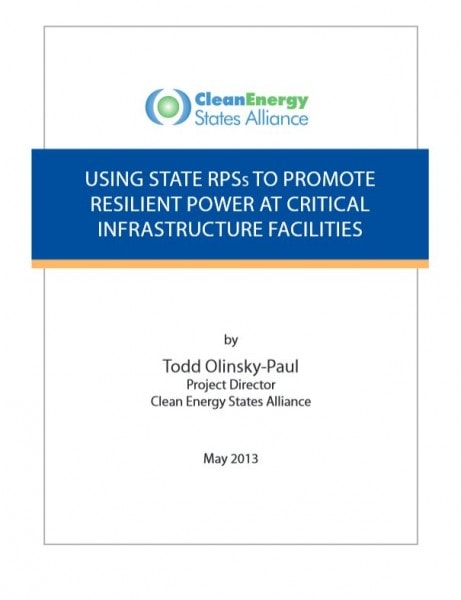Using State RPSs to Promote Resilient Power at Critical Infrastructure Facilities
June 3, 2013
Todd Olinsky-Paul | Clean Energy Group, Clean Energy States Alliance (CESA)
Recent severe storms have resulted in electric grid failures in the U.S. In many cases, the provision of emergency services to the public has been hindered by the loss of electric power; many critical facilities (facilities necessary for the provision of emergency services, such as medical facilities, police stations, gas stations, and community shelters) do not have emergency generators, and where they do exist, such generators are prone to failure. As a result of recent experience with storm-related electric grid damage, and predictions by climate scientists that extreme weather events will occur more frequently in the future, states are increasingly seeking ways to enhance energy resiliency at critical facilities (defined as the ability to self-supply electricity sufficient to provide critical services while the grid is down). The challenge is to find a mechanism by which states can promote and support critical facility energy resiliency projects. This paper explores whether renewable portfolio standards, which have been adopted by 29 states, the District of Columbia and Puerto Rico, could offer such a mechanism. By adopting appropriate incentives, definitions and safeguards, states could use their existing RPSs to support increased energy resiliency at critical facilities, while simultaneously promoting the increased deployment of clean energy resources.





